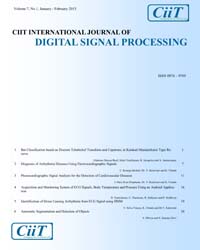Design of Power Reduced Architecture of ECG Based Processor for Predicting Ventricular Arrhythmia
Subscribe/Renew Journal
This work is the prediction of ventricular arrhythmia using a unique set of ECG features. The design of a Radial Basis Function classifier (RBF) in fully integrated electrocardiogram (ECG) Signal Processor (ESP) is used to classify each heart beat as normal or abnormal. In this classifier containing an Artificial Neural Networks (ANN) are now being increasingly standard in the area of classification and prediction, where failure model and other related statistical techniques have usually been employed. The adaptive techniques for the detection and the delineation of the P-QRS-T waves were investigated to extract the fiducial points in real-time applications. Here the process of detecting the all intervals in the ECG signal and compare the stored record for Ventricular Arrhythmia with area architecture design. Classification of electrocardiogram (ECG) signals plays a vital role in clinical diagnosis of heart disease. This paper proposes the design of an efficient system for classification of the ventricular ectopic beat (V),normal beat (N), fusion beat (F), supraventricular ectopic beat (S), and unknown beat (Q) using a mixture of features. In this paper there are two different feature extraction methods are proposed for classification of ECG beats: (i) S-transform function based features along with temporal features and (ii) mixture of WT and ST based features along with temporal features. The extracted feature set is independently classified by using an Artificial Neural Network (ANN). The performances are evaluated on several normal and abnormal ECG signals from recordings of the MIT-BIH arrhythmia database.
Keywords

Abstract Views: 343

PDF Views: 4



